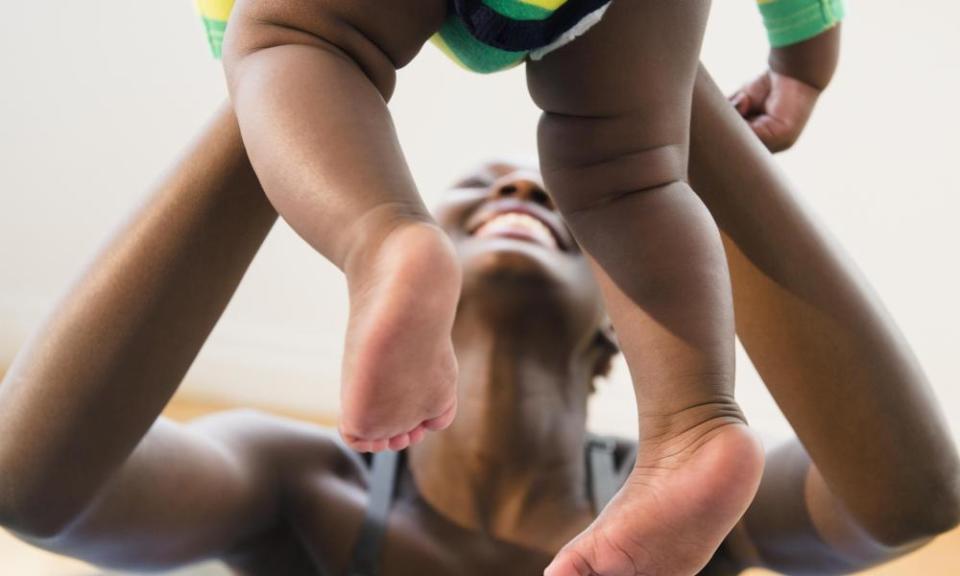Guaranteed paid leave for new parents included in 2018 US budget proposal
Program would provide six weeks of paid leave after birth or adoption; no details about same-sex couples, with states ‘free to establish’ their own programs

Donald Trump on Tuesday will unveil a 2018 budget that requests funding for the creation of a program that guarantees paid family leave for new parents.
Tucked into a budget blueprint that would slash social programs for the poor is a $25bn proposal that would provide six weeks of paid leave for mothers and fathers after the birth or adoption of a child.
The program, which was spearheaded by his daughter and senior adviser, Ivanka Trump, is likely to encounter opposition on Capitol Hill, where Republicans have repeatedly balked at the effort to create a federal paid family leave program.
Mick Mulvaney, the director of the Office of Management and Budget, hailed the plan as a “truly groundbreaking thing for this president to do” during a Monday briefing with reporters about the president’s proposed budget. Including the benefit in the 2018 budget, which will be released on Tuesday, “prove[s] to folks that we can do things like that and we can still balance the budget if we prioritize our spending right”, Mulvaney said.
The proposal is meant to ensure that “all families can afford to take time to recover from childbirth and bond with a new child without worrying about paying their bills”, according to the White House. No details were given about the children of same-sex couples. States would be “free to establish paid parental leave programs that are most appropriate for their workforce and economy”.
Advocates of paid family leave, however, were unimpressed. Debra Ness, president of the National Partnership for Women and Families, called the proposal “phony and truly dangerous”.
“A paid leave plan that continues the current state-by-state patchwork, only provides six weeks of leave when we have a clearly established 12-week national standard, guarantees leave only for new parents and is not funded responsibly would do more harm than good,” Ness said in a statement.
The United States is the only industrialized nation that does not guarantee workers paid family leave, a fact Democrats and advocates have highlighted in their push for a federal program. Three states – California, New Jersey and Rhode Island – currently provide paid family leave, and New York will launch its state program next year.
Certain companies are required to provide employees with 12 weeks of unpaid leave to care for their babies, under the Family and Medical Leave Act. But while the job is protected, the time off is typically unpaid.
New research shows that a majority of Americans support paid family leave, but widely disagree on who should cover the cost of this benefit. Support for paid family leave ranged from 67% to 85%, depending on the policy proposal, according to an analysis by the Pew Research Center. And just slightly more Americans, 51%, said the federal government should mandate paid family leave while 48% said the employer should decide, the study found.
During the briefing with reporters on Monday, Mulvaney, who was a South Carolina congressman before joining Trump’s team, anticipated the pushback from his former colleagues.
“People ask me, ‘Mulvaney, you’re a Freedom Caucus guy. How can you support paid parental leave?’” he said, referring to the congressional group of arch-conservative House Republicans.
He argued that such a program would keep more people in the workforce and, as a result, spur economic growth. Trump’s proposed budget assumes the country’s economic growth rate will rise to 3% over the next decade, a projection dismissed by some analysts as highly unrealistic.
“It goes right to the heart of the matter on 3% growth,” Mulvaney continued. “We need people who are sitting at home thinking, ‘You know what, I don’t know if I can go back to work because we’re getting ready to have a kid and what happens if I have to stay home?’ We try to create the environment where people are more comfortable going back to work and staying at work knowing that if they do have a child, [they will be] able to spend time with that child under the paid parental leave program. We can do all of that and balance.”
Democrats have pushed more generous paid leave plans. Senator Kirsten Gillibrand has introduced a gender-neutral plan that would guarantee workers recoup two-thirds of their pay for up to 12 weeks when they take time off for personal or family medical conditions, including pregnancy and childbirth. The plan would be funded by worker and employer contributions.
Ivanka Trump championed paid family leave during her father’s 2016 presidential campaign. She spoke about it during the Republican national convention, when her father accepted the party’s nomination, and played a central role in pushing her father to introduce a version of the plan on the campaign trail. Ivanka was by his side when Donald Trump rolled out a series of childcare policies at a rally in Pennsylvania last September. Among them was a plan that offer six weeks of paid maternity leave to new mothers whose employers did not already provide coverage.
Since her father took office, the first daughter has been working to build allies on Capitol Hill to support the initiative.

